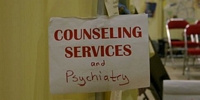Exogenous dermatitis
- Air-borne contact dermatitis
- Photodermatitis
- Phytophotodermatitis
- Irritant contact dermatitis
- Allergic contact dermataitis
- Infectious eczematoid dermatitis
Endogenous dermatitis
- Atopic dermatitis
- Seborrheic dermatitis
- Nummular eczema
- Stasis dermatitis
- Pompholyx
Atopic dermatitisIt is a part component of atopic diathesis and is characterized by lowered threshold to pruritus. It may arbitarily be divided into infantile, childhood/ adolescent and adult variants.The face, particularly the cheeks are the usually affected site.
Seborrheic dermatitisIt is the part component of seborrheic diathesis which includes acne vulgaris, rosacea, seborrheic dermatitis, and labile personality. The dermatitis is characterized by scaly patches, the margins of which are indistinct.
Nummular dermatitisIt presents with characteristic round, nummular, coin like lesions, distributed on the extensor surface of the extremities, posterior aspect of the trunk, buttocks, and lower legs.
Stasis dermatitisIt usually affects persons like teachers, laborers, rickshaw-pullers, athletes, etc. whose work requires long hour of standing. This predisposes to varicose veins with tortuous, dilated veins over the legs. It is followed by stasis of blood on the dependent parts of the legs.
Air borne contact dermatitisIt is usually encountered in those who work in open and are exposed to dust, pollens, and other particles suspended in the air.
PhotodermatitisIt is the general name used to define the abnormal eczematous response to the stimulus of light. It is usually evoked in association with chemicals which are innocuous to the skin in absence of light exposure.
DIAGNOSISThe diagnosis of acute eczema is made by the presence of cardinal clinical features of erythema, edema, vesiculation, and crusting, and associated itching. The chronic lichenified dermatitis is characterized by hyperpigmentation, thickening of the skin, and exaggeration of skin markings. The clinical features of respective eczemas (vide supra) should help in forming the diagnosis. Office procedures, namely patch test for contact dermatitis, photopatch test for photodermatitis and exposure withdrawl test for air borne contact dermatitis.
TREATMENTThe corticosteroid form the mainstay of treatment. These may be combined with antihistamines. Antibiotics may be indicated in associated secondary infection. Topical bland compresses like potassium permagnate, boric acid or aluminium subacetate are essential.
Herbal Unani TreatmentMajoon ushba 10 gm twice daily for 30 days, Majoon chobchini 10 gm twice daily, Decoction musaffi khoon 10 gm an Marham Gulabi for local application.



